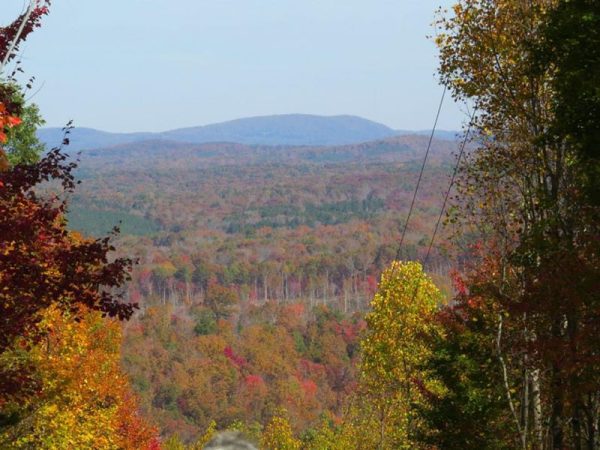Protecting the Piedmont’s wild heart

In the heart of the Piedmont, there’s a place apart – a far cry from the skyscrapers, highways, shopping centers and subdivisions of our urban areas. The 5,160-acre Birkhead Wilderness Area, at the northern tip of the Uwharrie National Forest, is designated as a place “where the earth and its community of life are untrammeled by man, where man himself is a visitor who does not remain.”
This is the language of The Wilderness Act of 1964. When President Lyndon B. Johnson signed it into law, he made a prescient observation: “If future generations are to remember us with gratitude rather than contempt, we must leave them with more than the miracles of technology. We must leave them a glimpse of the world as it was in the beginning.” Fifty years ago, who could have imaged the extent to which technology has shaped our lives and development has shaped our land here in the Piedmont?
As we celebrate the 50th anniversary of this visionary legislation, we have accrued nearly 110 million acres of wilderness on federal lands across the United States. While the original 9.1 million acres included Shining Rock and Linville Gorge in western North Carolina, the vast majority of the acreage was in the American West. As the law was written – or some say interpreted – only pristine tracts met the stringent criteria to qualify as wilderness. Since land in the East had already been farmed or logged, most of it wasn’t eligible. In 1975, Congress revisited the act and specified guidelines for lands east of the 100th meridian. Sixteen new wilderness areas were designated. Most were in the Southeast, including Craggy Mountain, Joyce Kilmer and Slickrock.
Building on this momentum, The Wilderness Society and the Sierra Club began to advocate for protecting additional areas in each of North Carolina’s four national forests: Pisgah, Nantahala, Croatan and Uwharrie. They began the arduous process of mapping and ground-truthing areas that might be eligible. They were assisted in the Uwharries by members of the Greater Uwharrie Mountains Preservation and Appreciation Committee (which later changed its name to the Uwharrie Trail Club). This dovetailed with work Boy Scout leader Joe Moffitt and his troop were doing in the area in the 1970s to build the Uwharrie Trail. Eventually, a proposal to designate certain N.C. national forest areas as wilderness was submitted to the U.S. Forest Service. Robert Cox, now retired but then a professor of communication at UNC Chapel Hill who later became president of the Sierra Club, went to Washington to testify before a Congressional committee.
Those efforts culminated in the N.C. Wilderness Act of 1984. The late U.S. Rep. Jamie Clarke, D-N.C., introduced the bill in the House and the late GOP Sen. Jesse Helms supported it in the Senate. After passing both chambers – with unanimous bipartisan support from the N.C. delegation – the bill was signed into law by President Ronald Reagan. In total, the legislation designated an additional 68,700 acres across North Carolina as wilderness and reserved another 25,816 acres in Pisgah and Nantahala as wilderness study areas which could be added to the system with further documentation.
In this era of gridlock and bickering on Capitol Hill, I’m heartened by the bipartisan support for this sweeping legislation, especially since it passed during a rancorous period. James Watt, Reagan’s secretary of the Interior, had become a polarizing figure after urging the federal government to consider selling off much of its public land, including the Uwharrie National Forest. I still remember where I was when I first heard the news – in my ’68 Mustang on the Ophir Road, no doubt listening to the old Big WAYS-AM radio out of Charlotte. As I crossed Barnes Creek and started the climb up Morris Mountain, surrounded by the Uwharrie National Forest, I thought, “They can’t get rid of this!” In the end, Watt’s controversial proposal probably helped galvanize public support for land conservation.
Since then, the Birkhead tract has been closed to motor vehicles and mechanical equipment. Logging and mineral extraction aren’t allowed. When trail maintenance is needed, hand tools are used instead of chain saws. The result is a haven for those who seek a back-country experience for hiking, camping, fishing and hunting. By letting nature reign supreme, the Birkhead Wilderness Area gives us an increasingly rare opportunity to appreciate an ancient Piedmont landscape.
In the late 1970s, the Uwharries were within a two-hour drive of 3 million people. Today, that figure has ballooned to approximately 8 million. Furthermore, Charlotte and Raleigh are projected to be the two fastest-growing cities in the nation in the coming decades. The Uwharries will continue to be the wild heart of the Piedmont, but only if we remain vigilant and united in calling for their protection.